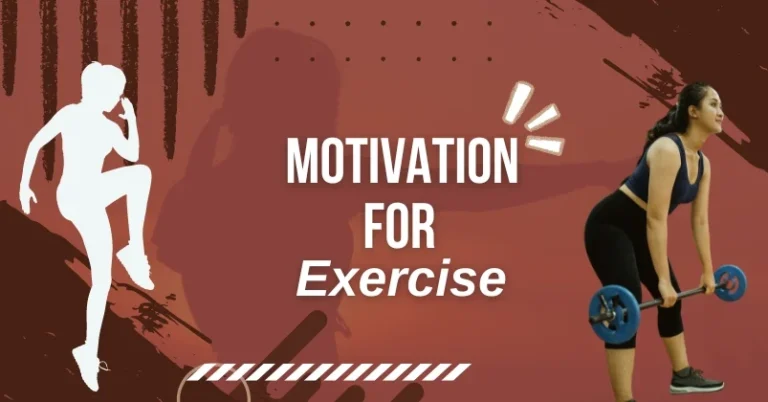Overcoming Exercise Barriers: Tips and Strategies
Regular exercise has numerous health benefits, including reducing the risk of chronic diseases, improving mental health, and increasing longevity. However, many people struggle to maintain an exercise routine due to various barriers. Understanding and overcoming these barriers can help individuals achieve their fitness goals and improve their overall health.
Common exercise barriers include lack of time, motivation, energy and access to facilities or equipment. Strategies to overcome these barriers include setting realistic goals, finding a workout buddy, scheduling exercise into your daily routine, and choosing activities that you enjoy. Additionally, social support and having a fitness routine can help individuals stay motivated and accountable. By identifying and addressing exercise barriers, individuals can create a sustainable exercise routine that fits their lifestyle and improves their health.
Understanding Exercise Barriers
Exercise is an essential part of maintaining a healthy lifestyle, but many people struggle to incorporate it into their daily routine. Understanding exercise barriers can help you identify the obstacles that are preventing you from being active and develop strategies to overcome them.
Common Barriers To Exercise
There are many barriers to exercise, both internal and external. Internal barriers include personal factors such as lack of motivation, fear of injury, or low self-esteem. External barriers involve environmental factors such as lack of access to facilities, bad weather, or a lack of time.
Fear Of Injury
One of the most common internal barriers to exercise is the fear of injury. Many people avoid physical activity because they worry about getting hurt or exacerbating an existing injury. However, regular exercise can actually help prevent injuries by strengthening muscles and improving flexibility.
Obesity
Obesity is another common barrier to exercise. People who are overweight or obese may feel self-conscious about their bodies and avoid physical activity as a result. However, exercise can be an effective way to manage weight and improve overall health.
Overcoming Exercise Barriers
To overcome exercise barriers, it's important to identify the specific obstacles that are preventing you from being active. Once you've identified these barriers, you can develop strategies to overcome them. For example, if lack of time is an issue, try scheduling exercise into your daily routine or finding ways to incorporate physical activity into your daily tasks.
In conclusion, understanding exercise barriers is an important step in developing a successful exercise routine. By identifying and overcoming these barriers, you can improve your overall health and well-being.
Common Exercise Barriers And Solutions
Regular exercise is essential for maintaining a healthy lifestyle, but many people struggle to incorporate it into their daily routine. Here are some common exercise barriers and solutions to help you overcome them.
Lack Of Time
One of the most common barriers to exercise is a lack of time. Many people have busy schedules and find it difficult to set aside time for physical activity. One solution is to break up exercise into smaller, more manageable chunks throughout the day. For example, you can take a 10-minute walk during your lunch break or do a quick workout before work. Another solution is to prioritize exercise by scheduling it into your daily routine. Set aside a specific time each day to exercise and treat it like an important appointment.
Lack Of Energy
Another common barrier to exercise is a lack of energy. Many people feel too tired to exercise, especially after a long day at work. One solution is to choose less strenuous activities, such as yoga or stretching. These activities can help you relax and recharge while still providing health benefits. Another solution is to exercise in the morning when you have more energy. Start your day with a quick workout to boost your energy levels and set a positive tone for the rest of the day.
Lack Of Skill
Some people may avoid exercise because they feel they lack the necessary skills or knowledge. For example, they may not know how to use gym equipment or perform certain exercises. One solution is to seek guidance from a personal trainer or fitness professional. They can help you develop a safe and effective workout plan and teach you proper form and technique. Another solution is to start with simple, beginner-friendly exercises and gradually work your way up to more challenging activities.
Lack Of Resources
Another barrier to exercise is a lack of resources, such as access to a gym or workout equipment. One solution is to find free or low-cost alternatives, such as walking or jogging outside, using household items as weights, or following online workout videos. Another solution is to take advantage of community resources, such as local parks or recreation centers.
Fear Of Injury
Some people may avoid exercise because they fear getting injured. One solution is to start with low-impact activities, such as swimming or cycling, that are less likely to cause injury. Another solution is to gradually increase the intensity and duration of your workouts to build strength and endurance over time. It is also important to warm up properly before exercise and use proper form and technique to reduce the risk of injury.
Social Constraints
Finally, social constraints can be a barrier to exercise for some people. For example, they may not have social support from family or friends, or they may feel self-conscious about exercising in public. One solution is to find a workout buddy or join a fitness class to provide motivation and accountability. Another solution is to exercise at home or in a private space where you feel comfortable and confident.
By identifying and addressing these common exercise barriers, you can develop a sustainable and enjoyable workout routine that fits into your lifestyle.
Strategies To Overcome Exercise Barriers
Regular physical activity has numerous health benefits, but many people encounter various barriers that prevent them from exercising regularly. Fortunately, several strategies can help individuals overcome these barriers and establish a consistent exercise routine.
Planning Ahead
One of the most effective strategies to overcome exercise barriers is to plan ahead. By scheduling your workouts in advance, you can ensure that you have enough time to exercise and avoid scheduling conflicts. It's also essential to identify the best time of day to exercise, which is often when you have the most energy. Additionally, planning ahead can help you identify alternative exercise options if your preferred activity is not available.
Finding A Workout Buddy
Finding a workout buddy can be an excellent way to overcome exercise barriers. Having a friend or family member to exercise with can provide motivation, accountability, and social support. It can also make exercise more enjoyable and provide an opportunity to catch up with loved ones. Working out with a partner can also help you push yourself harder and achieve better results.
Joining An Exercise Group
Joining an exercise group is another effective strategy to overcome exercise barriers. Exercise groups can provide a sense of community, accountability, and motivation. They can also offer a variety of exercise options and provide access to expert guidance and instruction. Additionally, exercise groups can be a great way to meet new people and make new friends.
Using Convenient And Inexpensive Resources
Using convenient and inexpensive resources is another strategy to overcome exercise barriers. There are many resources available that can help you exercise at home or on a budget. For example, you can use free workout videos on YouTube, purchase inexpensive exercise equipment, or use household items like stairs, chairs, and water bottles for resistance training. Additionally, many parks and outdoor spaces offer free or low-cost exercise options, such as hiking trails, bike paths, and outdoor fitness equipment.
By implementing these strategies, you can overcome exercise barriers and establish a consistent exercise routine. Whether you plan ahead, find a workout buddy, join an exercise group, or use convenient and inexpensive resources, there are many ways to make exercise a regular part of your life.
Role Of Physical Activities In Overcoming Barriers
Regular physical activity is essential for maintaining good health and well-being. However, many people face barriers to engaging in physical activity. Some common barriers include lack of time, lack of motivation, and physical limitations. Fortunately, there are many different types of physical activities that can help individuals overcome these barriers and get moving.
Walking
Walking is a low-impact physical activity that can be done almost anywhere and at any time. It is a great way to get started with physical activity, especially for those who are new to exercise or have physical limitations. Walking can help improve cardiovascular health, strengthen muscles, and boost mood.
Jogging
Jogging is a more vigorous form of physical activity that can help improve cardiovascular fitness and burn calories. It is important to start slowly and gradually increase intensity to avoid injury. Jogging can be done outdoors or on a treadmill and can be a great way to challenge oneself and improve overall fitness.
Swimming
Swimming is a low-impact physical activity that can be a great option for those with joint pain or other physical limitations. It is a full-body workout that can help improve cardiovascular health, build muscle, and increase flexibility. Swimming can be done in a pool or in open water and can be a fun way to cool off during hot weather.
Aerobic Dance
Aerobic dance is a fun and energetic form of physical activity that combines dance moves with aerobic exercise. It can be done in a group setting or at home with a video. Aerobic dance can help improve cardiovascular health, coordination, and balance.
Climbing Stairs
Climbing stairs is a simple and effective way to incorporate physical activity into daily life. It can be done indoors or outdoors and can help improve cardiovascular health, strengthen leg muscles, and burn calories. Climbing stairs can be a good option for those who have limited time or do not have access to other forms of physical activity.
Jumping Rope
Jumping rope is a high-intensity form of physical activity that can help improve cardiovascular fitness, coordination, and agility. It can be done almost anywhere and requires minimal equipment. Jumping rope can be a fun way to challenge oneself and improve overall fitness.
Calisthenics
Calisthenics are bodyweight exercises that can be done without equipment. They can help improve strength, flexibility, and overall fitness. Calisthenics can be a good option for those who do not have access to a gym or prefer to exercise at home.
Yoga
Yoga is a form of physical activity that combines movement, breath, and meditation. It can help improve flexibility, balance, and reduce stress. Yoga can be done in a group setting or at home with a video and can be a great way to improve overall health and well-being.
Overall, there are many different types of physical activities that can help individuals overcome barriers to exercise and improve overall health and well-being. It is important to find activities that are enjoyable and sustainable to ensure long-term success.
Importance Of Social Support In Overcoming Exercise Barriers
Social support is a crucial factor in overcoming exercise barriers. It is essential to have people around who can motivate and encourage you to stick to your exercise routine. Research studies have shown that social support is positively associated with physical activity in young adults.
Friends and family can provide emotional support, accountability, and motivation. They can help you stay on track with your exercise routine by encouraging you to stick to your workout plan, reminding you of your fitness goals, and providing you with a sense of accountability. One study found that social support from family, friends, and experts was positively associated with exercise behavior in older adults.
Community support is another essential aspect of social support. Joining a gym or a group, such as the YMCA or a hiking club, can provide you with a sense of community and belonging. It can also help you meet new people who share similar fitness goals, making it easier to stay motivated and committed to your exercise routine.
Social support can also help overcome barriers such as lack of energy and time constraints. By planning social activities involving exercise, such as hiking or taking a fitness class with friends, you can make exercise a fun and enjoyable experience. Developing new friendships with physically active people can also help you adopt a healthier lifestyle and overcome exercise barriers.
In summary, social support is an essential factor in overcoming exercise barriers. Friends, family, and community can provide emotional support, accountability, and motivation. By planning social activities involving exercise and developing new friendships with physically active people, you can make exercise a fun and enjoyable experience.
Role Of Fitness Routine In Overcoming Barriers
Having a fitness routine can help overcome barriers to exercise. A well-planned fitness routine can make it easier to stick to a regular exercise schedule and overcome common barriers such as lack of time, motivation, and energy.
Warm Up
A proper warm-up is essential before starting any exercise routine. It helps to prepare your body for physical activity and reduces the risk of injury. A warm-up should last for at least 5-10 minutes and should include light cardiovascular exercises such as jogging in place, jumping jacks, or cycling. It is also important to stretch the muscles that will be used during the exercise routine.
Exercise
The exercise routine should include a combination of cardiovascular exercises and strength training exercises. Cardiovascular exercises such as running, cycling, or swimming can help improve heart health, burn calories, and increase stamina. Strength training exercises such as weightlifting or resistance band exercises can help build muscle, improve bone density, and increase metabolism.
It is important to choose exercises that you enjoy and that fit your fitness level. Starting with low-intensity exercises and gradually increasing the intensity can help prevent injury and make it easier to stick to the routine.
Cool Down
A cool-down is just as important as a warm-up. It helps to gradually lower your heart rate, prevent dizziness, and reduce muscle soreness. A cool-down should also last for at least 5-10 minutes and should include light cardiovascular exercises such as walking or stretching exercises.
Gym
Joining a gym or fitness center can provide access to a wide range of exercise equipment and classes. It can also provide a supportive community of like-minded individuals who can help motivate and encourage you to stick to your fitness routine.
Overall, having a well-planned fitness routine that includes warm-up, exercise, and cool-down can help overcome common barriers to exercise and make it easier to stick to a regular exercise schedule.
Conclusion
In conclusion, overcoming exercise barriers is crucial for achieving success in maintaining a healthy lifestyle. Motivation is key in overcoming these barriers, and setting realistic goals can help keep you on track. It is important to remember that exercise is not just about physical strength, but also about flexibility and heart health.
Identifying personal barriers to exercise and finding ways to overcome them is essential. Lack of time is a common barrier, but finding small opportunities to be active throughout the day can add up to significant improvements in overall health. Additionally, enlisting the support of friends and family can help keep you motivated and accountable.
Increasing self-efficacy and self-monitoring progress are also important strategies in overcoming exercise barriers. Celebrating small successes along the way can help keep you motivated and on track towards your goals.
Overall, with the right mindset and strategies in place, overcoming exercise barriers is achievable for anyone looking to live a healthier lifestyle.
FAQs
Lack of resources can be a major barrier to physical activity. However, there are several ways to overcome this barrier. One effective way is to utilize free resources such as walking or running outside, using bodyweight exercises, or participating in community fitness events. Additionally, many gyms and fitness centers offer low-cost or free trial memberships, which can be a great way to access resources without breaking the bank.
Lack of energy can be a common barrier to physical activity, but it can be overcome with a few simple strategies. One effective way is to eat a balanced diet that includes plenty of fruits, vegetables, and lean proteins. Additionally, getting enough sleep and staying hydrated can help boost energy levels. Finally, starting with low-intensity exercises and gradually increasing the intensity can help build endurance and increase energy levels over time.
The most common barriers to exercise include lack of time, lack of motivation, and fear of injury. To overcome these barriers, it is important to set realistic goals and create a consistent exercise routine. Additionally, finding an exercise partner or joining a fitness class can help increase motivation and accountability. Finally, learning proper form and warming up before exercise can help prevent injuries.
Physical education classes can present unique exercise barriers, such as limited time and resources. To overcome these barriers, it can be helpful to focus on incorporating activities that can be done in small spaces, such as bodyweight exercises or yoga. Additionally, incorporating technology-based activities or gamification can help increase engagement and motivation.
Examples of exercise barriers include lack of time, lack of resources, lack of motivation, fear of injury, and physical limitations. To address these barriers, it is important to start with small, achievable goals and gradually increase intensity and duration over time. Additionally, seeking out community resources or professional guidance can help address specific barriers, such as physical limitations or fear of injury.
The top three barriers to exercise are lack of time, lack of motivation, and fear of injury. To overcome these barriers, it is important to prioritize exercise and create a consistent routine. Finding an exercise partner or joining a fitness class can help increase motivation and accountability. Additionally, learning proper form and gradually increasing intensity can help prevent injuries and build confidence.








